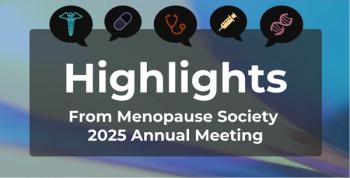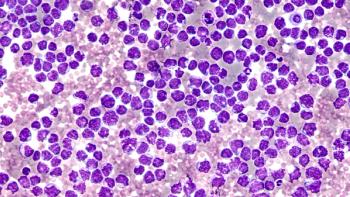
Telemedicine Boosts Quality of Life, Inhaler Technique for Severe COPD
Key Takeaways
- Telemedicine significantly improved quality of life and inhaler technique in advanced COPD patients compared to traditional follow-up care.
- The telemedicine group showed a significant reduction in COPD assessment questionnaire scores and better inhaler technique adherence.
Telemedicine improved the quality of life and inhaler technique among patients with advanced-stage chronic obstructive pulmonary disease (COPD).
Telemedicine improved quality of life (QOL) and inhaler technique in patients with advanced
“COPD is currently regarded as a significant public health concern in both developed and developing nations,” the authors wrote. “Therefore, it is important to develop novel interventions for patients with this disease to encourage them to self-manage the disease and thereby reduce the medical burden caused by acute exacerbations of the disease. Telemedicine could be a solution for this and is, therefore, being used in the medical field for the management of chronic diseases.” Compared with standard in-person care, telemedicine can also reduce the burden on health care systems.2
The prospective, randomized, controlled, method-based clinical study included patients hospitalized due to COPD exacerbation, using a sealed envelope randomization method to split patients into 2 groups: a telemedicine group (n = 37) and a control group (n = 37).1 COPD assessment questionnaire (CAT) scores, a 6-item Inhaler Adherence Scale, and inhaler technique were compared between groups for 3 months after their initial hospital visit.
The telemedicine group was followed up by an investigator via video calls at 10 days, 1 month, and 3 months after discharge. During these visits, the investigator assessed vital signs, respiratory complaints, and reviewed inhaler treatment adherence and technique. Patients who required further diagnostic evaluation were invited to the outpatient clinic to be assessed in person and, when necessary, admitted to the pulmonary ward. If hospitalization was not needed, patients were started on treatment and reevaluated in a video call after 3 days.
The control group was managed by a physician at an outpatient clinic who was not aware of the study. Patients were advised to schedule a follow-up visit at 10 days through the hospital’s system. Data for the control group at 10-day and 1-month marks were retrospectively obtained from hospital records. Data for the third month were collected during a scheduled follow-up visit.
At 3 months, the telemedicine group showed significant improvements in both QOL and inhaler technique compared with the control group. The telemedicine group had a median CAT score of 9 at 3 months, significantly lower than the control group's median score of 18 (P = .019). There was also a statistically significant improvement in CAT scores within the telemedicine group over the course of their visits, from a baseline median of 16 to a final median of 9.
A statistically significant difference was also observed in inhaler technique. At the 3-month mark, 91.4% of patients in the telemedicine group performed the correct inhaler technique compared with 65.7% in the control group (P = .02). The researchers noted that this was likely due to the continuous monitoring and correction of inhaler steps during the tele-visits.
Although inhaler adherence was higher in the telemedicine group (70.6%) than in the control group (55.9%), the difference was not statistically significant (P > .05). The authors suggest that increased communication and frequent reminders on the importance of treatment may have positively influenced patient adherence behaviors.
Patients in the telemedicine group also reported high satisfaction with their follow-up care. When surveyed, 89% of patients said they would prefer to continue with telemedicine for future follow-ups, and 83% reported feeling no anxiety or minimal anxiety about being examined by a doctor via telemedicine. The researchers attributed this comfort to the fact that patients felt they could reach the physician without time restrictions, leading to a sense of being under close observation.
The authors acknowledged several limitations, including the study’s single-center design, short 3-month follow-up period, and a lack of control group data for interim visits due to poor attendance. The study also focused on patients with GOLD 3-4 COPD, which may limit the generalizability of the findings to less severe COPD patients. The authors recommend that future studies include a more representative patient group and control for sociodemographic factors like educational level, which was not captured in this study.
“Telemedicine has improved the quality of life of advanced-stage COPD patients and their inhaler techniques,” the authors wrote. “It may, therefore, be considered a promising alternative to traditional face-to-face follow-ups, although various technical infrastructures and legal regulations are necessary.”
References
1. Dogan ZS, Kokturk N. Evaluation of patients diagnosed with chronic obstructive pulmonary disease in terms of treatment compliance and quality of life after follow-up with telemedicine: a randomized controlled trial. BMC Pulm Med. 2025;25(1):408. doi:10.1186/s12890-025-03854-z
2. Koh JH, Chong LCY, Koh GCH, Tyagi S. Telemedical interventions for chronic obstructive pulmonary disease management: umbrella review. J Med Internet Res. 2023;25:e33185. doi:10.2196/33185
Newsletter
Stay ahead of policy, cost, and value—subscribe to AJMC for expert insights at the intersection of clinical care and health economics.













































